
2010-2011 Agency FOIA Success Stories: Creating a Culture of Transparency
In the two years since the President issued his FOIA Memorandum directing agencies to apply a presumption of openness to all decisions involving the FOIA, agencies across the government have taken steps to create a more open and accountable government. Attorney General Holder’s FOIA Guidelines underscored the President’s commitment to open government and provided agencies with guidance on how to apply the presumption of openness. The Attorney General directed all agency Chief FOIA Officers to report each year to the Department of Justice on the steps that they had taken to improve transparency. This week marks the second year since the issuance of both the President’s FOIA Memorandum and the Attorney General’s FOIA Guidelines that agencies have submitted Chief FOIA Officer Reports to the Department of Justice. These reports outline the wide variety of initiatives, big and small, undertaken over the past year as agencies build upon the concrete steps taken last year to implement the President’s directive. The 2011 Chief FOIA Reports reveal that a trend is emerging in the way agencies implement the FOIA, demonstrating that a new culture of transparency is taking hold. The below highlights, from the 2011 Chief FOIA Officer Reports of cabinet and other key agencies, are just some of the success stories that are emblematic of steps taken by all agencies to “renew their commitment to the principles embodied in the FOIA” and to achieve an unprecedented level of transparency.
Key Agency Highlights

Department of Agriculture (USDA): Meeting Public Demand Through Proactive Disclosures
- By making more information available to the public online, USDA’s Animal and Plant Health Inspection Service (APHIS) drastically reduced the number of FOIA requests it received in 2010, slashing its incoming requests by 42% after posting a wide variety of agency reports, enforcement actions, and prior FOIA responses.
- USDA’s APHIS reduced its overall backlog of FOIA requests by almost 43% from 2009.
- USDA’s Farm Service Agency (FSA) followed suit, posting electronic payment information for its farm programs and making it available for download at no charge.
- USDA’s Risk Management Agency (RMA) recently embarked on an aggressive initiative to upgrade and improve its public website to provide better information and improve overall customer satisfaction. RMA website modernization initiative will improve accessibility, navigability, and facilitate the customer’s experience, making timely, relevant information available to users.

Department of Commerce: Improving Websites, Posting More Online
- After receiving numerous FOIA requests related to its 2010 Decennial Census enumerator training, the Census Bureau reviewed and posted all enumerator training manuals to their FOIA Reading Room.
- The Economic and Statistics Administration (ESA) launched a new, more informative, easier to navigate, and customer friendly homepage for its Headquarters website. The site’s layout and content serve the Administration’s transparency agenda by making more information easily accessible by the public. A streamlined review process ensures that posted material is of interest to the public and posted in a timely manner.
- The National Telecommunications and Information Administration (NTIA) posted a wide variety of grant award documents, including nearly 300 grants made pursuant to the Recovery Act. Approximately 500 to 1000 pages of NTIA records are posted on NTIA’s website daily. This initiative has led to a reduction in the number of FOIA requests, as the records are now freely available on NTIA’s website.
- The Office of Inspector General (OIG) continued to show its commitment to transparency by proactively posting reports and other records of public interest on its website. In particular, the OIG established electronic Reading Rooms dedicated to high profile subjects such as the 2010 United States Census and the NOAA Fisheries Enforcement Programs and Operations investigation.

Department of Defense (DoD): Posting FOIA Responses & Making Backlog Reduction a Priority
- The Office of the Secretary of Defense/Joint Staff posted 85% of all of its FOIA responses --totaling over 300,000 pages -- on its website, and moved to require all thirty-one DoD components to follow suit.
- The Department of Army implemented a Backlog Reduction Project, including: site visits to local subordinate components to determine reasons for backlogs and to offer training on methods to improve efficiency and to gain leadership support of the FOIA programs.
- The Army’s backlog reduction efforts led to an astounding 68% decrease in the Army’s backlog.

Department of Education: Setting Goals & Bridging Gaps, Increasing Staffing
- The Department of Education is holding regular meetings between members of its FOIA Service Center, Chiefs of Staff within its Principal Offices, and other key personnel to bridge the gap between expectations and implementation of the Department’s efforts to improve FOIA processing.
- Looking forward, the Department of Education has set a number of ambitious goals for fiscal year 2011, including reducing its static backlog by 12%, and increasing proactive release of documents to the FOIA Reading Room by 25%.
- In 2010, the Department’s Federal Student Aid office (FSA) hired experienced FOIA personnel to assist with its processing responsibilities, and also increased training sessions for FSA FOIA personnel.

Department of Energy (DOE): Success Starts at the Top
- The Department of Energy’s Chief FOIA Officer (CFO) has taken an active role in the agency’s FOIA program by staying abreast of the Department’s caseload and focusing high-level attention on FOIA issues such as the need to reduce the agency’s backlog and shorten processing times.

Department of Health and Human Services (HHS): Working Smarter, Seeing Results
- HHS’s Centers for Medicare and Medicaid Services (CMS) achieved a backlog reduction of 66%, after nearly doubling the resources it committed to FOIA and creating a “Backlog Strike Force.”
- CMS’s Backlog Strike Force, comprised of highly experienced FOIA professionals, demonstrated immediate success at HHS by closing over 500 older backlogged cases a month.
- CMS reengineered the current processing of FOIA requests away from the first-in first-out concept towards “intelligent case processing,” focusing its most highly skilled staff resources on the intake and assignment of new requests in order to identify the swiftest and most responsive ways to meet requests. Under the new system, three teams handle groups of cases and deal with them based on the issues each poses.
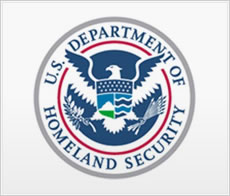
Department of Homeland Security (DHS): Dedicating Resources, Setting Goals, & Changing Business as Usual
- By making process changes and focusing on strategic goals, the U.S. Citizenship & Immigration Services (USCIS) slashed its backlog from 88,361 FOIA requests in 2006 to approximately 8,000 backlog cases at the end of FY 2010, for an over 90% total reduction.
- USCIS leadership stresses that transparency must begin at the top: to emphasize the value that leadership places on openness and disclosure, USCIS’ Director approved thirty additional employees to be devoted to FOIA Operations in the coming year.
- The Customs and Border Protection’s (CBP) FOIA Appeals, Policy & Litigation (FAPL) Branch processed 815 cases in 2010, almost as many as had been processed in the five previous years combined and triple the amount that was processed in FY 2009.
- The CBP/FAPL Branch developed a comprehensive strategic plan which led to the elimination of the FOIA appeals backlog, including: intensive review of backlog cases, reassignment of cases based on experience and ability, careful monitoring of the backlog and setting clear goals, allowing flexible work hours, improving business processes, and using awards to motivate and recognize success.

Department of Housing and Urban Development (HUD): Streamlining Process, Communicating with Requesters, Reducing Backlog
- HUD reduced the number its backlog by 45% in FY 2010.
- The FOIA Office’s Director is conducting a review of HUD procedures in an effort to streamline its processes and develop consistency across program offices.
- Many HUD offices contact FOIA requesters who have submitted broad requests in an effort to refine the scope of their requests, which allows for a more efficient allocation of resources and quicker response times.
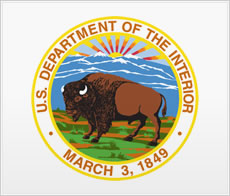
Department of the Interior (DOI): Online Request Tracking, Reducing Backlog, and Achieving Transparency Through Timely Proactive Disclosures
- Despite a spike in the number and complexity of requests received after the Deepwater Horizon/British Petroleum (BP) Oil Spill, DOI met its backlog reduction target of 10%.
- DOI developed a “FOIA Request Status” public interface on its website, allowing FOIA requesters to instantly check the status of their pending requests.
- A special Deepwater Horizon Electronic Library and Reading Room was established by the Bureau of Ocean Energy, Management, and Enforcement (BOEMRE). The Reading Room contains documents related to the Deepwater Horizon/BP Oil Spill that have been cleared for public release.
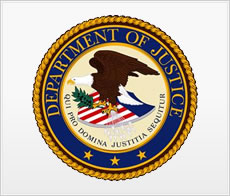
Department of Justice (DOJ): Taking the Lead on Transparency
- DOJ launched FOIA.Gov, an interactive and user-friendly website, allowing the public to easily track and generate statistics on FOIA compliance government-wide, and explaining FOIA basics in plain English -- making the FOIA easy to understand for the ordinary citizen.
- The Department’s rate of disclosure spiked for both releases in full and in part in 2010 -- with full releases jumping by 21% over 2009, and partial releases increasing by 18.2%.
- The Department’s Office of Information Policy launched a completely revamped website, making a wealth of FOIA resources, including guidance, new court decisions, and the DOJ FOIA Guide available in a more accessible and user-friendly manner. Now making FOIA guidance and discussion available through social media, the Director of the Department’s Office of Information Policy unveiled a new FOIA blog, converting the online newsletter FOIA Post into a blog-based format. The Department’s Reference Guide for FOIA requesters has been completely re-written in plain English and reproduced in a Q&A format online, making basic FOIA information clearer and more welcoming to requesters.
- In 2010, the Department processed the most FOIA requests since 2002, when the functions (and FOIA responsibilities) of the former Immigration & Naturalization Service (INS) were transferred to DHS, despite receiving the most requests in any single year since that time.
- All DOJ components now accept requests by email.
- The Department’s use of Exemption 5 dropped significantly, for the second year in a row, down 14.9% from last year, and 20.1% from 2008, marking an all-time low in the use of Exemption 5 since the departure of INS.
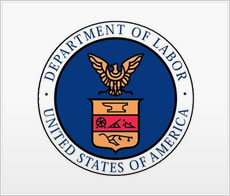
Department of Labor (DOL): Proactive Disclosures, Meeting Demand in a Timely Manner
- In response to public interest in the Upper Big Branch mine tragedy, the Mine Safety Health Administration (MSHA) created an Upper Big Branch Single Source Page on their website, which allowed it to quickly post enforcement actions and related records for 18 months preceding the accident. Despite being overwhelmed with FOIA and media information requests, MSHA was able to provide the mining community and the general public with access to information related to this major accident.

Department of State: Agency Coordination Yields Faster Results
- Faced with a skyrocketing number of document referrals from another agency -- contributing to the escalation of State’s backlog -- the Department created a streamlined review and administrative processing structure, assigning these referrals to a newly established Rapid Response Team trained on implementing new procedures. Then, in order to reduce the flow of incoming referrals, the Department initiated a dialog with the other agency and successfully negotiated a formalized agreement which set forth the guidelines for handling the various categories of documents being referred.
- As a result of the Department’s targeted, two-pronged approach to the challenge presented by the exponential increase in referrals, State dramatically reduced the number of pending referrals, and cut the number of monthly referrals from 4,000 to fewer than 300 per month, yielding greater efficiency in the process between agencies and increasing customer satisfaction by providing quicker responses to requesters.
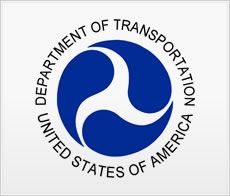
Department of Transportation (DOT): Making Data Usable, Not Just Available
- DOT’s launched a new interactive website on the American Recovery and Reinvestment Act of 2009 (ARRA), which provides detailed grant and project information for programs funded by the ARRA. But the site doesn’t just provide a wide-range of information: by including interactive mapping capabilities, the public can see what projects have been funded by the Recovery Act in their area, and can even track ARRA projects by mode of transportation (aviation, highway, rail, etc.); location; or Congressional district, and view “Voices of the Recovery Act” videos for specific projects.
- DOT is making other public information more user-friendly, recently launching a re-designed FOIA website featuring an updated FOIA Reference Guide.
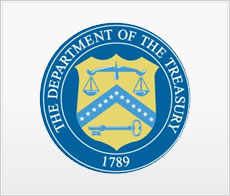
Department of the Treasury: Making Transparency Interactive, Embracing Social Media
- In an effort to increase transparency, the Department of the Treasury launched the IRS Open Government website, which provides avenues for members of the public, tax practitioners and other stakeholders to participate and collaborate in IRS decision-making processes. The webpage facilitates public participation in Open Government by providing practical information about how the IRS works, resources for the public, and soliciting ideas from the public on ways to improve operations and other policy matters.
- An IRS Intranet FOIA webpage was created for IRS employees, which educates employees about their FOIA responsibilities, the importance of transparency in government, and the agency’s Open Government initiatives.
- The IRS uses social media to communicate with the public. For example, the IRS runs four YouTube channels with over 300 videos posted on a wide variety of topics intended to inform the public about IRS, tax laws, and procedures. These videos are produced in English, Spanish and American Sign Language, and have well over one million views.

Department of Veterans Affairs (VA): Putting More Online, Disclosing Proactively
- The VA has been proactively releasing, and posting, records that used to only be accessible through formal FOIA requests. Records of the Office of Information & Technology, including software documentation, source code, training manuals, and demos of computerized patient medical records software, are now instantly available to the requester community.

Environmental Protection Agency (EPA): Putting Data in the Public’s Hands
- Last year, the EPA established a web-based tool, MyPropertyInfo, which allows the public direct access to site-specific information on potential environmental hazards useful in real estate transactions information. With the advent of MyPropertyInfo, the public can now obtain the information they seek within seconds, without having to file a FOIA request. The effect on EPA’s numbers has been impressive: an approximate 27% reduction in “no records” responses has been attributed to the public’s use of the MyPropertyInfo tool.

Federal Reserve Board: Slashing Backlog, Public Webcasts
- The Board cut its backlog in half, reducing backlogged requests from 129 in 2009 to 55 in 2010.
- The Board made available, through its YouTube channel, live webcasts of numerous events including Chairman Bernanke’s Town Hall meeting with educators, Community Reinvestment Act hearings, a National Summit meeting to discuss methods and resources for encouraging neighborhood stabilization, and an open Board meeting.
Additional Highlights

U.S. Agency for International Development (USAID): Collaborating on FOIA and Open Government
- USAID’s FOIA office collaborated with the agency’s Open Government Team in a partnership that yielded improved FOIA accountability, reporting and disclosures. Going forward, continued collaboration between USAID’s FOIA and Open Government teams will result in the agency making more information proactively available to the public.

Central Intelligence Agency (CIA): Communicating with Requesters, Improving Customer Service
- In order to avoid unnecessary delays in processing complex requests, CIA encouraged its case managers to call requesters in order to discuss their requests directly, as well as to reach out to requesters who need assistance in determining where else to send their requests. By opening this line of communication with requesters, the CIA recognized that requesters will be more satisfied with the results of their requests -- and CIA could also process requests more quickly -- by establishing the scope of the request earlier in the process.
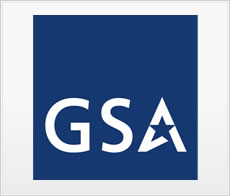
General Services Administration (GSA): Making Timeliness a Priority
- GSA makes responding to FOIA requests within the statutory timeframe a top priority: as a result, GSA successfully closed its backlogged requests and appeals since the close of FY 2010. By using an electronic tracking system, GSA headquarters can easily communicate with FOIA officers nationwide and closely follow the status of all requests, ensuring prompt attention to each incoming FOIA request and reaffirming the agency’s commitment to top-notch customer service.

National Aeronautics and Space Administration (NASA): Transparency Through Technology
- In 2010, NASA’s FOIA program continued to prosper from its efforts to increase transparency through the use of numerous types of social media and web-based educational programs. NASA’s continued efforts to inform and engage the public through media forums, social media, educational programs, website content updates, news events, and multimedia presentations, mark the agency’s many efforts to use innovative steps and modern technology to increase transparency.

National Science Foundation (NSF): Increasing Staffing & Resources
- Reaffirming its commitment to a strong FOIA program, NSF management elevated the NSF FOIA/Privacy Act Officer position to a GS-14 level, reflecting the increased Foundation-wide duties of the position and enhancing the FOIA Officer’s status and visibility. NSF also added “FOIA assistant” duties to its OGC Executive Secretary position, lending further support to the FOIA Officer in day-to-day FOIA operations.
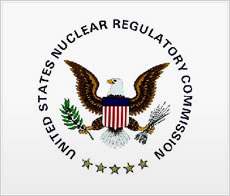
Nuclear Regulatory Commission (NRC): Proactive Disclosures, Putting More Online
- The NRC added high-value datasets on its website, resulting in increased transparency with respect to the NRC’s operations and functions. In the past, this information was available only by making a FOIA request.
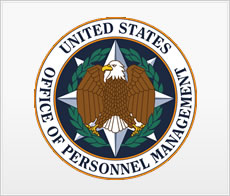
Office of Personnel Management (OPM): Collaborative Government is Good Government
- The culmination of an agency-wide initiative for increased transparency and openness, OPM created OpenOPM, a website committed to sharing information, hearing and implementing ideas, and engaging in an ongoing conversation with stakeholders in the agency’s mission. OPM also made its FOIA website more practical and informative.

Small Business Administration (SBA): Setting Goals & Making FOIA a Priority
- In connection with its Open Government efforts, SBA put a spotlight on FOIA by developing a roadmap for reaffirming SBA’s commitment to transparency and proactive disclosures under the FOIA. The plan, Excellence in Processing FOIA Requests and Enhancing the Agency’s FOIA Operations, details the steps the agency will take to make more information available online, in open format, including by working in collaboration with program offices to identify high value information and data sets, and to improve the SBA FOIA website overall.

Social Security Administration (SSA): Engaging the Public Through Social Media
- SSA increased its presence on social media sites, such as Facebook, YouTube, and Twitter, as a means to provide a new and versatile outlet for communicating SSA programs and new initiatives.
Last Updated: Friday, March 11, 2011





